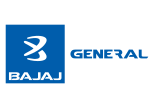Effective Salary Slip Format: Your Guide to a Professional Pay Statement

A salary slip format is a document where you can get detailed information about an employee’s gross & net salary. This statement, which serves as proof of income, serves the employee with tax filings, loan applications, financial planning, etc. Employers follow a consistent salary slip format for all employees to help promote transparency, adherence to the law, and simplifying payroll management.
A salary slip can be either electronic or paper-based. Since it acts as documentation of employee wage payments and deductions, employers are required by law to provide salary slips. For some smaller firms, where, a salary slip may not be regularly provided, the employee can request a Salary Certificate from the employer.
This blog will help you understand all the complete details about a salary slip format and different types of salary slips to ensure better and more effective management, both from the employer, as well as employee perspective.
Table of Contents
Key Components of a Salary Slip
1. Basic Information
A salary slip begins with essential details that identify the employer and employee. This section includes:
- Name and address of company – The name and the registered office address of the employer issuing the salary slip
- Employee Name and ID – The employee’s name along with their unique identification number.
- Designation and Department – The employee's job title and department.
- Pay Period – The month and year for which the salary is issued.
2. Earnings Section
This section details the employee’s gross earnings before deductions. It consists of:
- Basic Salary – The fixed part of the salary, typically amounting to 40-50% of your overall salary package.
- House Rent Allowance (HRA) – Allowance you receive for renting accommodation is partially exempt from tax in a few conditions.
- Dearness Allowance (DA) – A cost-of-living adjustment allowance, mostly applicable to government employees.
- Transport Allowance – An allowance for travel expenses.
- Medical Allowance - A fixed Sum provided by the employer to meet medical expenditure.
- Special Allowances – Any additional allowances that are the part of salary such as performance based additional pay/ incentives, bonuses or any other cash benefits.
- Overtime Pay – Pay over and above the actual salary for any extra hours worked beyond the standard working hours.
3. Deductions Section
Deductions reduce the gross earnings to arrive at the net salary. These typically include:
- Provident Fund (PF) – In India, all businesses with more than 20 employees have to offer retirement benefits to the employees which constitute the provident fund. As per legal requirements, both the employee and the employer have to make a contribution to the PF based on a specific percentage of the basic salary.
- Professional Tax (PT) – This is a special tax imposed by certain states like West Bengal, Maharashtra etc which is deducted according to salary slabs.
- Income Tax (TDS – Tax Deducted at Source) – Amount that gets deducted as per the income tax slab of the employee.
- Employee State Insurance (ESI) – An amount used for medical and social security benefits available to the employees.
- Loan Repayment – Deductions for loans taken from the employer.
4. Gross Salary vs. Net Salary
- Gross Salary – The total earnings before any deductions are made
- Net Salary (Take-Home Salary) – The final amount that gets credited to the employee’s bank account after all deductions are made.
5. Additional Information
Some salary slips may also include:
- Bank Details – The bank account number where the salary is credited.
- Taxable Income Summary – Details of taxable income and exemptions.
- Employer Contributions – Information on employer contributions to EPF, gratuity, or other benefits.
Sample Salary Slip Format
For employees it is important to understand the key components of a salary slip format so that they can get a clear understanding of their gross and net pay and the various components of their salary. A professional salary slip format includes certain important elements that help employees easily understand the breakup of their salary and helps employers to maintain transparency in the entire payroll records.
Here is a sample salary slip format issued to Ravi by his employer, ABC Pvt Ltd. This format clearly mentions Ravi’s employee details, earnings, deductions and net salary. By understanding the various components of the salary slip format Ravi can understand his PF and other deductions, understand his loan eligibility and better plan his investments too.
Company Name: ABC Pvt Ltd
Company Address: ABC, XYZ Street, Delhi, India
Salary Slip for: February 2025
Employee Details
|
Employee Name |
Employee ID |
Designation |
Department |
|
Ravi Saxena |
XYZ12345 |
Software Engineer |
IT |
Earnings
|
Basic Salary |
40,000 |
|
House Rent Allowance (HRA) |
12,000 |
|
Dearness Allowance (DA) |
5,000 |
|
Conveyance Allowance |
2,000 |
|
Medical Allowance |
1,500 |
|
Special Allowance |
4,500 |
|
Total Earnings |
65,000 |
Deductions
|
4,800 |
|
|
Professional Tax (PT) |
200 |
|
Income Tax (TDS) |
3,500 |
|
Total Deductions |
8,500 |
Net Salary
|
Net Salary (Take-Home) |
56,500 INR |
Tips for Creating a Professional Salary Slip
To ensure transparency and legal compliance, employers must issue a clear and professional salary slip. A poorly designed salary slip does not have all the required essential details and can cause confusion for the employee, payroll issues and even legal trouble for the employer.
So, what makes a salary slip professional and effective? Given below are some key tips to ensure that the salary slip format is well-structured and legally compliant.
- Use a clear and acceptable salary slip format: A salary slip should be easy to understand and must follow a proper structure. A proper salary slip must have different sections for employee details, earnings, deductions and net salary. A simple way to present these details is a table format with proper spacing, alignment, and legible font sizes so that employees can easily interpret their salary structure.
- Ensure Accuracy in Salary Calculations: Even a tiny mistake or miscalculation in tax deductions can lead to payroll problems resulting in needless stress for both the employee and employer. Employers can use payroll software, which automates computations and lowers the possibility of human error, to ensure higher accuracy. To guarantee compliance, employers should also keep up with tax legislation and deduction regulations.
- Ensure Compliance with Indian Labor Laws: Provident Fund (PF), Professional Tax (PT), and Income Tax (TDS) deductions are legally mandated salary deductions and must be clearly reflected in the salary slip.
- Digitize Salary Slips for Efficiency: Increasingly employers are opting for digital salary slips since they are easier to store and retrieve, more eco-friendly and are faster to distribute through email or HR portals.
- Maintain Data Security and Confidentiality: A salary slip includes private financial and personal data, including a worker's bank account information, PAN number, and tax deductions. Maintaining the highest level of confidentiality when handling sensitive documents is essential. Using password-protected PDF formats, limiting access to salary information to avoid unauthorized use, and utilizing secure payroll software that permits encryption are some best practices that top corporations employ to ensure data security.
Adopting these best practices can help employers enhance payroll efficiency, build employee trust, and also help avoid legal complications. A well-designed salary slip ensures that both employees and employers benefit from a smooth and transparent payroll process.
Common Mistakes to Avoid in Salary Slips
Here are some common mistakes that should be avoided while making salary slips to ensure transparency and accuracy.
- Inaccurate tax computation: The incorrect deduction of TDS or other statutory deductions is a frequent error on salary slip. Employers who use dependable payroll software that automates tax calculations might steer clear of this error.
- Incorrect Tax Calculation: A common mistake in salary slips is the wrong deduction of TDS or other statutory deductions. Employers can avoid this mistake by using reliable payroll software, which automates tax calculations.
- Missing or incorrect information: A salary slip must include accurate employee details such as full name, employee ID, designation, universal account number (UAN for PF contributions) etc. This can be done by ensuring that HR records are updated and the employee details are verified before payroll processing.
- Incomplete or unclear details of salary components: A proper salary slip format ensures that employees can clearly understand their earnings and deductions. An unclear slip which does not clearly highlight the various components can create confusion. Therefore, it is crucial to use a structure format that has distinct sections for earnings, deductions and net salary
- Non-compliance with government regulations: One of the biggest mistakes in a salary slip can be to not comply with Indian labour laws. Employers must ensure that all statutory deductions and contributions are correctly applied. These include PF contributions, professional tax deduction and income tax deductions. Employers need to stay updated with the latest laws and regulations.
Electronic vs. Physical Salary Slips
With digital transformation, companies now offer both electronic and physical salary slips, each with its own advantages and limitations.
|
Electronic Salary Slip |
Physical Salary Slips
|
|
Advantages:
|
Advantages:
|
|
Disadvantages:
|
Disadvantages:
|
Legal and Tax Aspects of Salary Slips
In India, a pay slip is a legally relevant document apart from being a record of earnings. It is essential for labor law compliance, income tax compliance, and financial verification of employees. It is mandatory for employers to ensure that their salary slips meet the legal requirements.
- Income Tax Compliance: Salary slips must include Tax Deducted at Source (TDS) details as per Income Tax Act, 1961. The salary slips are used by employees to file Income Tax Returns (ITR) and claim deductions under sections like 80C, 80D, and HRA exemptions.
- Provident Fund (PF) and Employee State Insurance (ESI): Employers have to deduct Employee Provident Fund (EPF) contributions as per EPFO guidelines along with ESI contributions.
- Professional Tax (PT): In certain states in the country a Professional Tax is imposed and has to be deducted from the salary. It must be mentioned in the salary slip.
- Labor Law Compliance: The Payment of Wages Act, 1936, mandates employers to provide detailed salary slips. There can be legal consequences to non-payment of wages or incorrect deductions
- Loan and Visa Documentation: Salary slips serve as official proof of income for loan approvals and visa applications. Banks and financial institutions require at least 3-6 months of salary slips for loan processing.





























